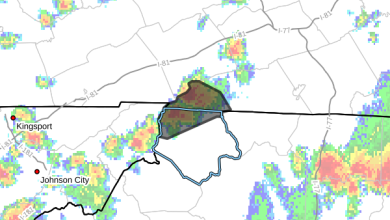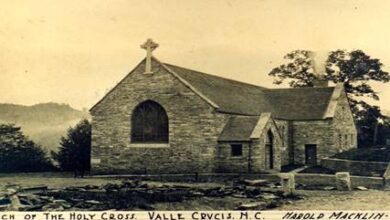Last Updated on September 23, 2015 3:42 pm
The N.C. Wildlife Resources Commission will implement delayed-harvest regulations on 36 trout waters in 19 western North Carolina counties on Oct. 1. Before Oct. 1, hatchery-supported regulations apply to these waters.
Under delayed-harvest regulations, no trout can be harvested or possessed from these waters between Oct. 1 and one half-hour after sunset on June 3, 2016. No natural bait may be possessed, and anglers can fish only with artificial lures with one single hook. An artificial lure is defined as a fishing lure that neither contains nor has been treated with any substance that attracts fish by the sense of taste or smell.
The Wildlife Commission stocks delayed-harvest trout waters from fall through spring with high densities of trout to increase anglers’ chances of catching fish. Delayed-harvest trout waters, posted with diamond-shaped, black-and-white signs, are popular fishing destinations for anglers who enjoy catch-and-release trout fishing.
The drought affecting western North Carolina this year raised concerns among agency biologists about whether there would be adequate habitat for stocked trout during the fall delayed-harvest season, but the stocking schedule will be met.
“Although stream flows are still low in many locations, we decided to stock as planned,” said Doug Besler, mountain fisheries supervisor. “With cooling water temperatures, adequate habitat is now available to support stockings.”
The discovery of whirling disease in North Carolina in July 2015 is not affecting dates, locations or numbers of trout being stocked in delayed-harvest waters this fall.
The Commission has implemented a number of measures to address whirling disease, and reduce the risk of spreading the pathogen that causes the disease. The Commission has developed a whirling disease website that includes information about the disease, fishing gear care, and reporting angler observations. In addition, the Commission has posted signs at sites where staff has detected the whirling disease pathogen. The signs explain how to disinfect fishing gear and apparel to reduce risk of transmission.
Commission staff has developed biosecurity protocols to disinfect stocking trucks, reducing the risk of spreading pathogens from any potentially infected location to an agency production facility. Commission staff also has initiated testing of the intermediate whirling disease host, tubifex worms, in sediment deposits in many trout waters across western North Carolina to help determine where the pathogen currently exists.
For a complete list of delayed-harvest trout waters, stocking dates, information on delayed-harvest regulations and trout fishing maps, visit the Commission’s trout fishing page.















